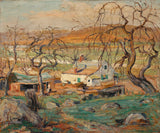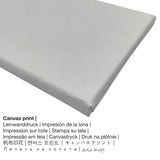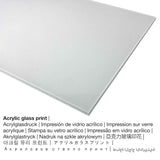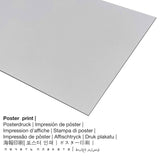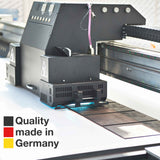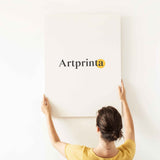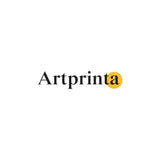Ernest Lawson, 1910 - Okirikiri ala nwere Osisi Gnarled - mbipụta nka mara mma
Ụtụ gụnyere. Mbupu gbakọrọ na ndenye ọpụpụ.
Landscape with Gnarled Trees bụ mpempe nka site na American artist Ernest Lawson na 1910. The mbụ jikoro size nke N'ozuzu: 20 x 23 7/8 na (50,8 x 60,6 cm) ma were ihe osise ese Usoro of mmanụ n'elu bọọdụ azụmahịa. It is included in the digital collection of Barnes Foundation in Philadelphia, Pennsylvania, Njikota Obodo Amerika. Site n'ikike nke Site n'ikike nke Barnes Foundation, Merion na Philadelphia, Pennsylvania (public domain license).: . In addition to that, the alignment of the digital reproduction is in landscape format with a ratio of 1.2 : 1, which means that the length is 20% longer than the width. Ernest Lawson was a painter, whose art style can primarily be attributed to Realism. The American painter lived for a total of 66 afọ Amụrụ na 1873 wee nwụọ na 1939.
Nhọrọ akụrụngwa ngwaahịa enwere ike
Maka ngwaahịa ọ bụla anyị na-enye ihe dị iche iche & nha. Nha na ihe ndị a bụ nhọrọ anyị na-enye gị maka nkeonwe:
- Mbipụta kwaaji: A canvas print is a printed cotton canvas mounted on a wooden frame. Canvas Prints have the advantage of being relatively low in weight, which means that it is easy to hang up your Canvas print without the use of additional wall-mounts. Therefore, canvas prints are suited for all kinds of walls.
- Mbipụta aluminom (aluminium dibbond): Aluminium Dibond prints are metal prints with a true depth effect. A direct Direct Print on Aluminum Dibond is the perfect introduction to art replicas on aluminum. For the Print On Aluminum Dibond, we print the selected work of art onto the aluminium surface. The direct UV print on aluminium is the most popular entry-level product and is an extremely stylish way to showcase fine art prints, since it puts all of the viewer’s attention on the image.
- Akwụkwọ mmado na ihe kwaaji: The poster print is a printed flat canvas paper with a slightly rough surface structure. Please bear in mind, that depending on the size of the canvas poster print we add a white margin of around 2-6cm round about the artwork to facilitate the framing with your custom frame.
- Mbipụta iko acrylic (nke nwere ezigbo mkpuchi iko): An print on acrylic glass, which is sometimes labelled as a plexiglass print, makes your favorite original artwork into stunning wall décor. Moreover, the acrylic fine art print offers a viable alternative to aluminium and canvas fine art prints. The work of art will be made with state-of-the-art UV direct print technology. The special effect of this are vivid, impressive colors. With an acrylic glass art print contrasts plus color details will be more identifiable with the help of the delicate tonal gradation of the print. Our real glass coating protects your custom art print against light and heat for many more years to come.
Nkwupụta iwu: We try everythig possible in order to depict the art products in as much detail as possible and to exhibit them visually. Although, the colors of the print products, as well as the printing might vary somehwat from the image on your device's monitor. Depending on your settings of your screen and the quality of the surface, not all color pigments will be printed one hundret percent realistically. Since all fine art prints are printed and processed manually, there may as well be slight differences in the motif's exact position and the size.
Ngwaahịa a
| Bipụta ngwaahịa: | nka nka |
| Mmeputakwa: | dijitalụ mmeputakwa |
| Usoro mmepụta: | Mbipụta UV / dijitalụ |
| Ihe ngosi: | German mmepụta |
| Stockdị ngwaahịa: | a na-achọ |
| A na-atụ aro iji ngwaahịa eme ihe: | ụlọ mmepụta ihe nka, nka mgbidi |
| Ndepụta: | usoro odida obodo |
| Njikwa oyiyi: | 1.2:1- (ogologo: obosara) |
| Nsonaazụ: | ogologo bụ 20% ogologo karịa obosara |
| Nhọrọ dị: | ígwè ebipụta (aluminium dibond), acrylic glass print (nwere ezigbo mkpuchi iko), mbipụta akwa akwa, mbipụta akwụkwọ mmado (akwụkwọ kwaaji) |
| Nha n'arọwa n'elu ihe ndọtị (mbipụta akwa akwa): | 60x50cm - 24x20", 120x100cm - 47x39", 180x150cm - 71x59" |
| Acrylic glass print (nwere ezigbo mkpuchi iko) nhọrọ: | 60x50cm - 24x20", 120x100cm - 47x39" |
| Mpempe akwụkwọ mmado (akwụkwọ kwaaji) nha dị iche iche: | 60x50cm - 24x20", 120x100cm - 47x39" |
| Ụdị mbipụta Dibond (ihe alumnium) dị iche iche: | 60x50cm - 24x20", 120x100cm - 47x39" |
| Nhazi nke nka nka: | biko mara na ngwaahịa a enweghị okpokolo agba |
Nkọwa ahaziri nke mpempe nka
| Aha nka nka: | "Landscape with Gnarled Trees" |
| Nhazi nke ọrụ nka: | sere |
| Okwu mkpokọta: | nkà nke oge a |
| Time: | 20th narị afọ |
| Emepụtara n'afọ: | 1910 |
| Afọ nka: | 110 afọ |
| Ọkara nke ihe osise izizi: | mmanụ n'elu bọọdụ azụmahịa |
| Akụkụ izizi (ọrụ nka): | N'ozuzu: 20 x 23 7/8 na (50,8 x 60,6 cm) |
| Ụlọ ihe ngosi nka: | Ntọala Barnes |
| Ebe ngosi nka: | Philadelphia, Pennsylvania, Njikota Obodo Amerika |
| Ebe nrụọrụ weebụ ihe ngosi nka: | Ntọala Barnes |
| Ụdị nka nka: | ngalaba ọha |
| Site n'aka: | Site n'ikike nke Barnes Foundation, Merion na Philadelphia, Pennsylvania |
Tebụl ozi omenkà
| Aha onye nka: | Ernest Lawson |
| Aha nka ndị ọzọ: | Ernst Lawson, Lawson, Lawson Ernst, Lawson Ernest, Lawson Ernest R. A., Ernest Lawson, e. lawson |
| okike onye nka: | nwoke |
| Nationality: | American |
| Ọrụ nke onye na-ese ihe: | onye na-ese ihe |
| Mba onye si: | United States |
| Nhazi nke onye nka: | omenkà nke oge a |
| Ụdị nka: | Ihe ngosi |
| Nwụrụ anwụ: | 66 afọ |
| A mụrụ: | 1873 |
| Afọ ọnwụ: | 1939 |
© Nchekwa ikike nwebisiinka | Artprinta.com
Original artwork specifications by Barnes Foundation (© Nwebiisinka - site na Barnes Foundation - Ntọala Barnes)
Ernest Lawson's colorful variations on the French impressionist technique had a lasting influence on Barnes's thinking about color. Born in Halifax, Nova Scotia, in 1873, Lawson lived and worked in the United States, claiming to have been born in San Francisco. In 1893, during his first stay in France, he sought out Alfred Sisley and painted the landscape around Moret-sur-Loing, where the famous impressionist lived. He returned to paint in France for two years, 1895 and 1896, moving to New York in 1898.Such Lawsons as Landscape with Gnarled Trees stress rugged application of rich, unctuous pigment, sinuous drawing, especially of trees, and a vivid, light-saturated freshness of color across their built-up surfaces. The presence of these and other Lawsons, hung side by side with the European and American moderns in the decade 1912 to 1922, struck a responsive chord and opened the way for Barnes's appreciation of the powerful, even explosive, turbulent color rhythms of the Lithuanian artist Chaim Soutine. Lawson's art, then, played an essential, if unacknowledged, role in kindling Barnes's receptivity to Soutine's profound originality and, thus, in shaping his collection.Richard J. Wattenmaker, American Paintings and Works on Paper in the Barnes Foundation (Merion, PA: The Barnes Foundation; New Haven: Yale University Press, 2010), 183-6.

